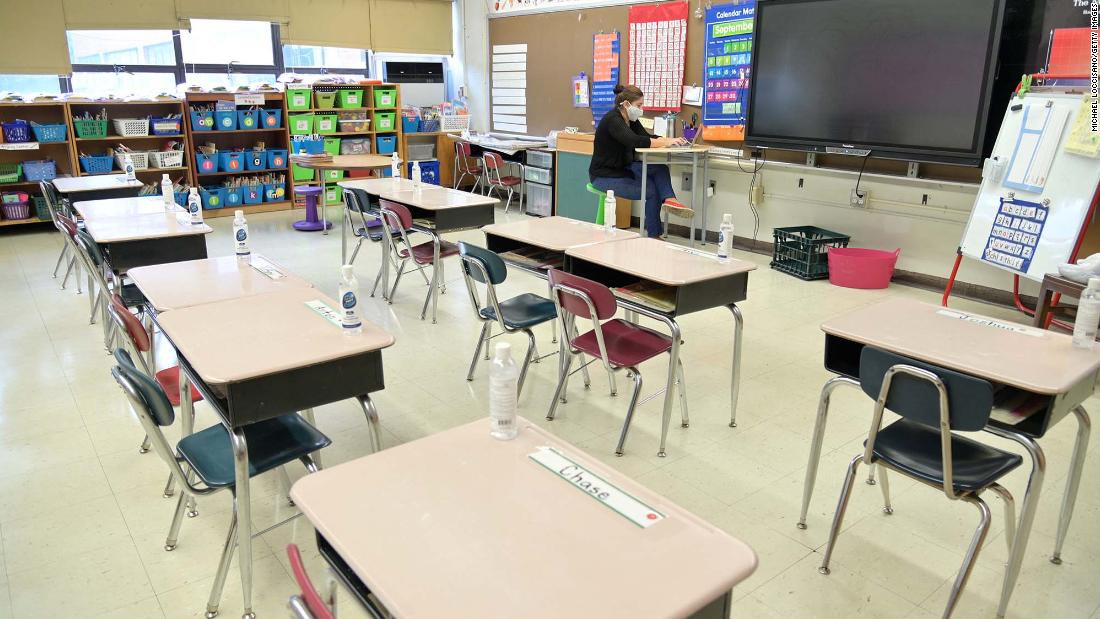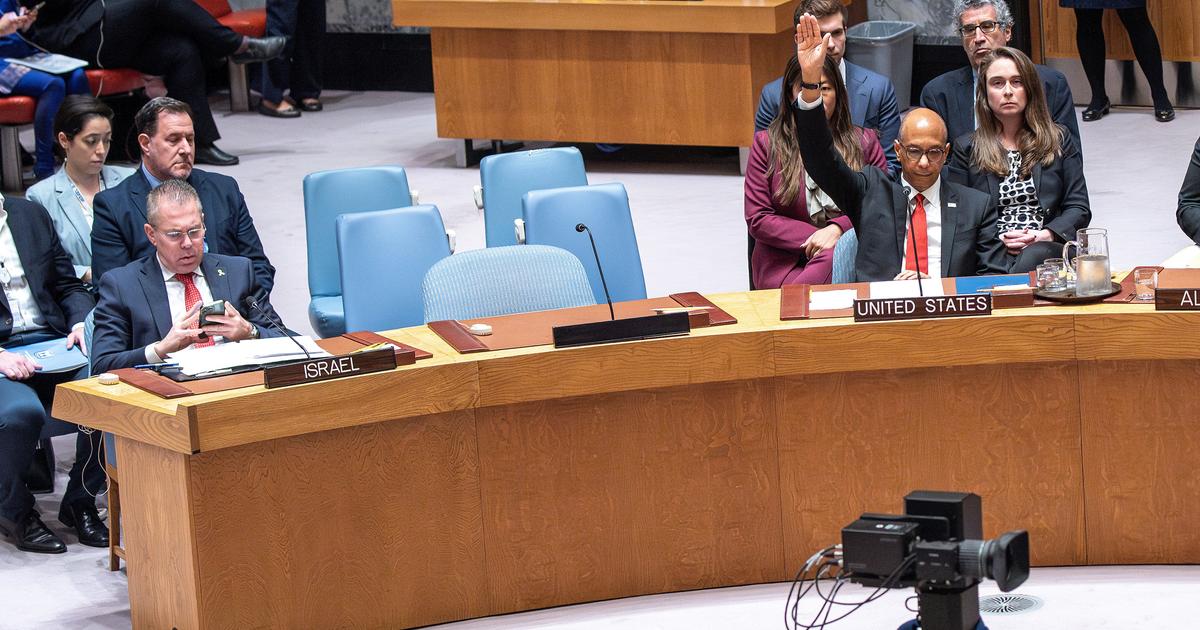Requirements in the US to reopen schools still in pandemic 3:11
(CNN) -
The Centers for Disease Control and Prevention (CDC) should do more to guide and encourage better air circulation in buildings, especially schools, to help prevent the spread of coronavirus, ventilation experts say.
They say the CDC hasn't paid enough attention to the role ventilation can play in helping the spread of viruses, or reducing it.
Schools will need to spend time and money improving airflow using HVAC systems, standalone HEPA air filter systems, or even simply opening windows if students, teachers, and staff are to safely return to learning in schools in the fall. experts say.
"The state of ventilation in America's schools right now is woefully inadequate," Richard Corsi, dean of the College of Engineering and Computer Science at Portland State University, said at a forum hosted by the Johns Center. Hopkins for Health Safety, at the Bloomberg School of Public Health, this week.
"Right now, schools are looking to the CDC and they're not getting the answers to the kinds of things we're talking about," Corsi added.
"Everybody looks at the CDC."
Corsi said he has advised schools that they need to improve ventilation, and his response has been that there is no specific guide on the CDC website.
advertising
CDC to publish new guidelines for return to face-to-face classes amid covid-19 pandemic
Aircraft ventilation does not spread viruses, says study 3:25
The CDC suggests that schools think about ventilation improvements.
“Consider ventilation system upgrades or improvements and other steps to increase clean air delivery and dilute potential pollutants in the school.
Consult experienced Heating, Ventilation and Air Conditioning (HVAC) professionals when considering changes to HVAC systems and equipment, ”he says in his guide.
It also points to the guide published by the American Society of Heating, Refrigeration, and Air Conditioning Engineers.
But that's not enough, the experts agreed.
Why is ventilation important to prevent the spread of the virus?
With poor ventilation, viral particles can accumulate in the air in a classroom, cafeteria, or hallway.
“If you look at all the high-profile breakouts, the same underlying factors, no masks, poor ventilation.
It doesn't matter if it's a
spin
class
,
ice
hockey, camps, classrooms, choir practice, or restaurants, [it's] the same underlying factors, ”Joseph Allen, who directs the Healthy Buildings Program at the University, told CNN. Harvard TH Chan School of Public Health earlier this month.
"The pandemic has revealed the role that our buildings, including schools, can play in the transmission of infectious diseases," William Bahnfleth, professor of architectural engineering at Pennsylvania State University, told the forum.
It is a fairly simple concept.
People constantly cough, sneeze, or just exhale particles.
If a person is infected with a virus, including the coronavirus, the viral particles can be carried in droplets that can become suspended in the air.
In a closed room, these particles will accumulate and others will inhale them.
The solution can also be simple: air exchange.
Replace the particulate-laden air with fresh, clean air, and the risk of transmission will drop.
Covid-19, more natural light for schools 0:37
The problem arises when sealed buildings also have poor ventilation systems, and the problem is exacerbated in colder months, when any windows or doors that may be present are firmly closed against the cold.
Three complete air exchanges in a room can remove infectious particles, Bahnfleth said.
A high-performance ventilation or air cleaning system can do this in 20 minutes, he said.
“A portable HEPA system with a clean air delivery rate of 300 cubic feet per minute in a typical classroom gives you the equivalent of three to four air changes per hour.
That, in many classrooms, is up to a 50%, 60% or 70% reduction in inhalation doses, ”added Corsi.
But principals, school boards, and teachers often know little about this concept.
"There isn't much awareness about indoor air," said Claire Barnett, founder of the Healthy Schools Network.
She said the problem has worsened since the US Environmental Protection Agency stopped funding its indoor air program for schools 10 years ago.
Neither the CDC nor the EPA has experience with indoor air in schools now, he said.
And it is a problem that, like so many others, affects the poorest communities the most.
“It has been well documented for decades that the poorest communities often have the poorest school facilities.
That means no clean air, no ventilation, broken plumbing, difficulties with sanitation leaks and mold, "said Barnett.
Bahnfleth pointed to a 2020 Government Accountability Office (GAO) study that found that 54% of school districts needed multiple system updates.
"About half of the districts needed to upgrade or replace multiple systems like heating, ventilation and air conditioning (HVAC) or plumbing," the report says.
"An estimated one-third of the schools needed HVAC upgrades."
It costs money up front, but it's worth it, Bahnfleth said.
"Yes, there may be significant costs involved in some cases, but not as high as some might think, and the cost of not making that investment is much higher," he said.
So who should pay?
“There is a need for investment, if only in air cleaning filter systems for classrooms.
This should be provided by the federal government, ”Dr. Donald Milton, Professor of Environmental Health at the University of Maryland, told CNN.
There is money for schools in President Joe Biden's $ 1.9 billion bailout plan, but none is earmarked for school ventilation systems.
Biden asks Congress for $ 1.9 trillion 2:31
And the CDC, he said, needs to do more to help people think about where the virus is, and that's in the air.
"If it's in tiny particles floating in the air and you inhale them, no matter how far it traveled in the air, the problem is the same.
The solution is also the same: you need ventilation, filtration and source control, and you need tight-fitting masks with good filters and breathability, "he said.
Bags to ventilate, the alternative for covid-19 patients in the event of a possible blackout in hospitals
What should not be done to clean the air?
Experts advised against using unproven technology to "clean" the air, saying that some approaches could result in polluted air.
The important thing is to exchange all the air in a room with fresh air several times an hour, they said.
"I want to implore everyone not to venture into unproven technologies that have slick marketing," Corsi said during the Johns Hopkins forum.
That includes fogging systems or sanitizing 'robots' or ultraviolet light systems.
"Nebulizers and atomizers work ideally in certain environments," Barnett said.
They include laboratories or hospitals, not schools, or office buildings, where untrained workers have no idea how to use the dangerous chemicals involved.
Ultraviolet light systems that are installed high on ceilings, with air circulation to draw exhaled air toward them, work well, Bahnfleth said.
But they can be expensive and are more appropriate for large shared spaces, such as gyms or cafeterias, than for small classrooms.
Some low-tech approaches can also do more harm than good, Barnett said.
Plastic protectors, for example, can concentrate polluted air and can stop large droplets for a short period [think of a box of groceries], but are useless in settings like classrooms where air can circulate around you with the weather.
"If you can smell cigarette smoke from the other side of the plexiglass, you are also inhaling viruses," Barnett said.
All of the experts criticized the CDC's emphasis on cleaning desks and other surfaces at the expense of the clean air concept.
"Surface cleaning is not very helpful in terms of cost effectiveness with COVID-19," said Delphine Farmer, Aerosol Expert at Colorado State University.
At the very least, cleaning solutions can fill the air with a complex cocktail of toxic chemicals, he said.
"There are very real consequences of over-cleaning," Farmer said at the Johns Hopkins symposium.
The same applies to systems that use oxidative chemical processes to break down virus-laden particles.
"But in doing so, they produce a number of organic compounds," he said, including toxins like formaldehyde.
"What we know works is ventilation and filtration," Farmer said.
CDCCovid-19















